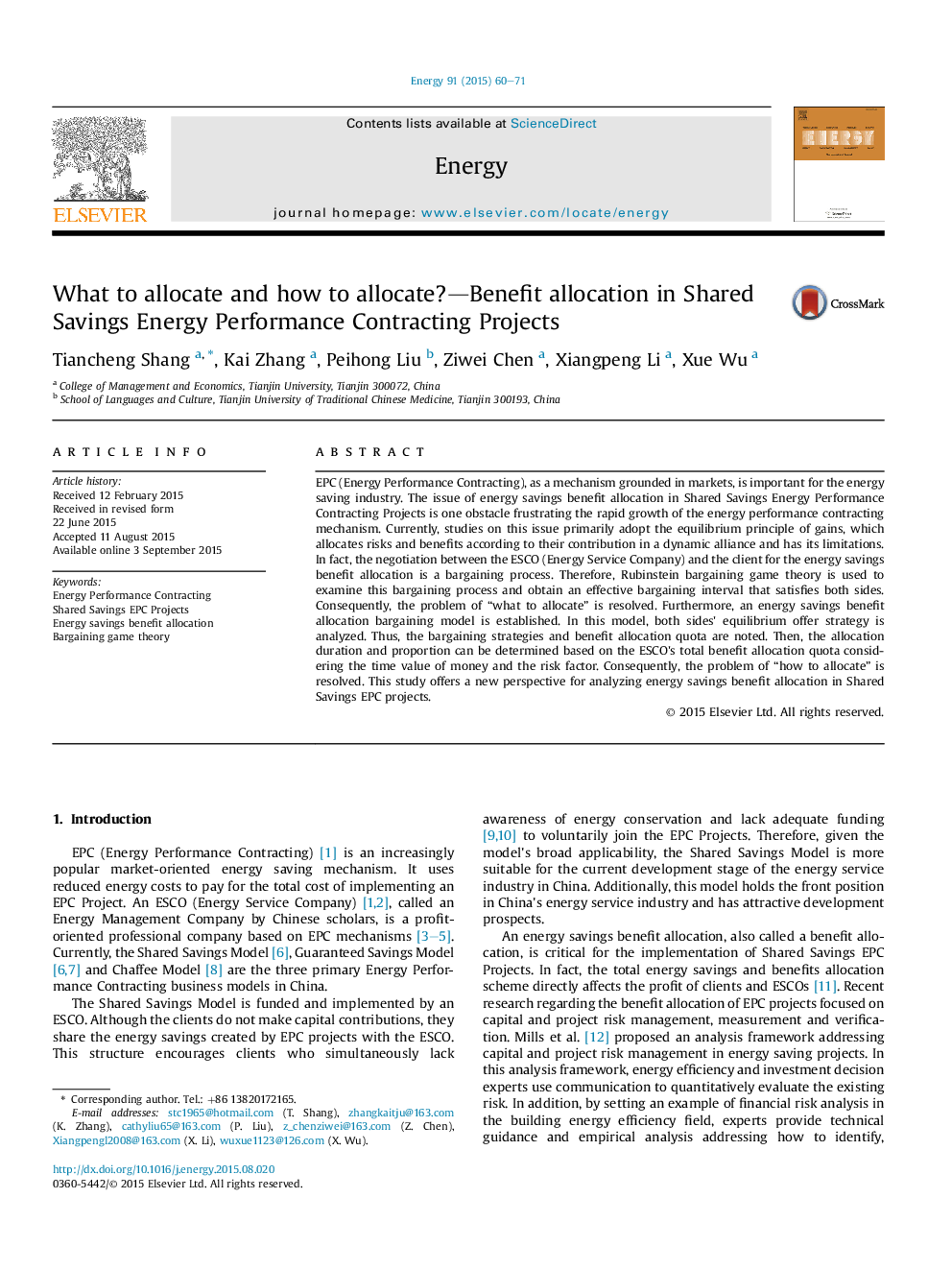| کد مقاله | کد نشریه | سال انتشار | مقاله انگلیسی | نسخه تمام متن |
|---|---|---|---|---|
| 1731471 | 1521455 | 2015 | 12 صفحه PDF | دانلود رایگان |
• The paper analyzes benefit allocation of energy savings in Shared Savings Projects.
• Using Rubinstein's bargaining model to simulate the process of negotiation.
• The effective bargaining interval which satisfies the both sides is obtained.
• The equilibrium bidding strategy and benefit allocation quota are pointed out.
• The allocation duration and proportion could finally be determined.
EPC (Energy Performance Contracting), as a mechanism grounded in markets, is important for the energy saving industry. The issue of energy savings benefit allocation in Shared Savings Energy Performance Contracting Projects is one obstacle frustrating the rapid growth of the energy performance contracting mechanism. Currently, studies on this issue primarily adopt the equilibrium principle of gains, which allocates risks and benefits according to their contribution in a dynamic alliance and has its limitations. In fact, the negotiation between the ESCO (Energy Service Company) and the client for the energy savings benefit allocation is a bargaining process. Therefore, Rubinstein bargaining game theory is used to examine this bargaining process and obtain an effective bargaining interval that satisfies both sides. Consequently, the problem of “what to allocate” is resolved. Furthermore, an energy savings benefit allocation bargaining model is established. In this model, both sides' equilibrium offer strategy is analyzed. Thus, the bargaining strategies and benefit allocation quota are noted. Then, the allocation duration and proportion can be determined based on the ESCO's total benefit allocation quota considering the time value of money and the risk factor. Consequently, the problem of “how to allocate” is resolved. This study offers a new perspective for analyzing energy savings benefit allocation in Shared Savings EPC projects.
Journal: Energy - Volume 91, November 2015, Pages 60–71
